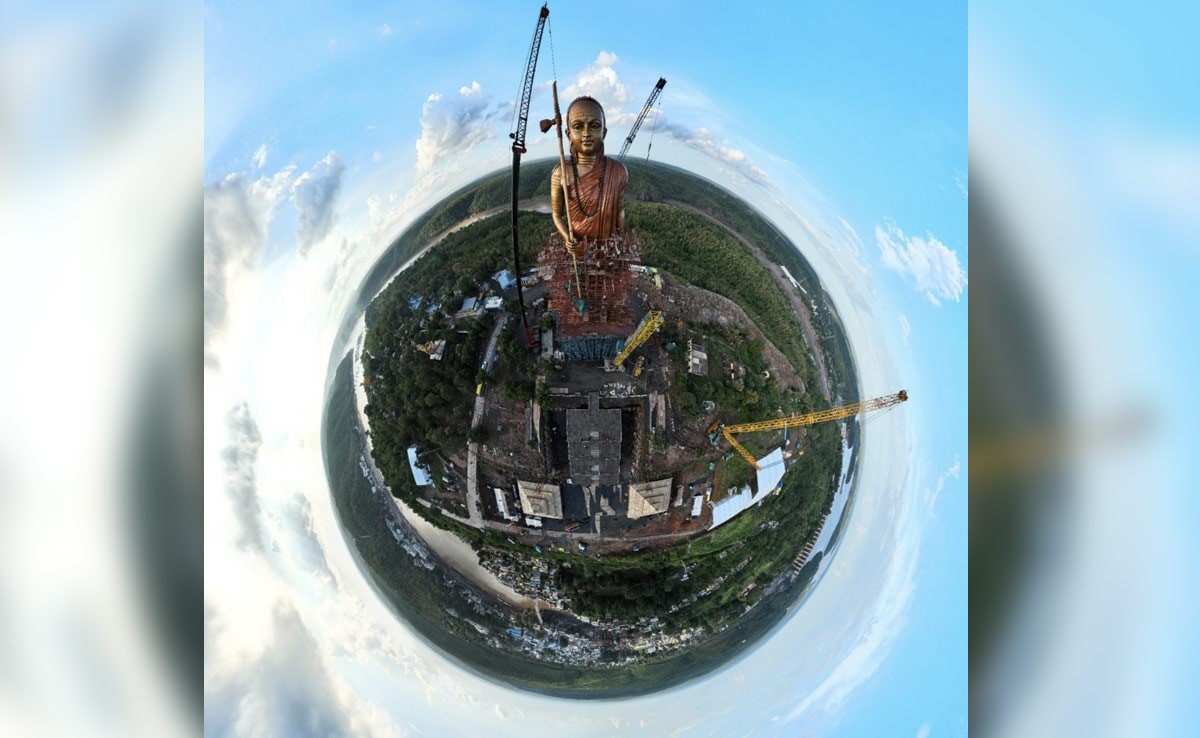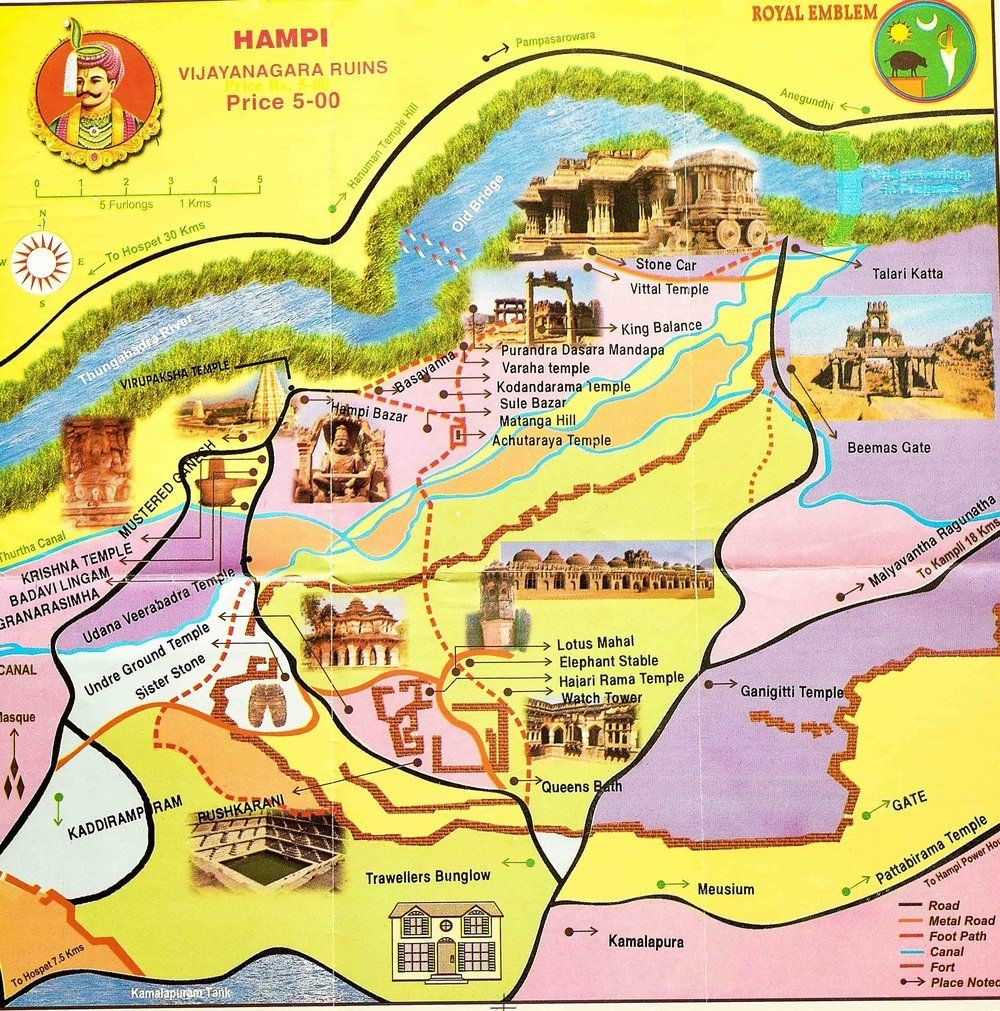Description

Disclaimer: Copyright infringement not intended.
Context
- The unveiling of the 108-foot-tall statue of Adi Guru Shankaracharya in Omkareshwar, Khargone district of Madhya Pradesh is a significant cultural and spiritual event.
Details
The Statue of Oneness
- Statue Description: The 108-foot-tall statue of Adi Guru Shankaracharya represents him as a child prodigy of 12 years. It is mounted on a 75-foot-tall pedestal, making it a grand and imposing structure. The entire statue weighs around 100 tons.
- Symbol of Peace and Unity: The statue, known as the "Statue of Oneness," is intended to symbolize peace and unity. Adi Shankaracharya's teachings and philosophy of Advaita Vedanta emphasize the oneness of all beings and the ultimate unity of the self (Atman) with the supreme reality (Brahman).
- Materials Used: The statue is constructed primarily of copper (88%), with small percentages of zinc (4%) and tin (8%). High-quality stainless steel weighing 250 tons was used for the construction of the substructure. The attention to material quality ensures the statue's durability.
- Artistic Precision: The statue is mounted on a 16-foot lotus made of stone and is the result of meticulous craftsmanship. It was designed and carved under the guidance of sculptor Bhagwan Rampure and painter Vasudev Kamath. The statue was constructed from 290 individual panels, highlighting the precision and artistry involved.
Advait Lok Project
- Foundation Laying: During the ceremony, MP CM also laid the foundation for the Advait Lok project, which is set to be constructed at a cost of ₹2,200 crore. This project will likely serve as a center for spiritual and cultural activities, further promoting the teachings of Adi Shankaracharya

About Adi Shankara
- Adi Shankaracharya, also known as Adi Shankara, was a renowned Indian philosopher and theologian who lived in the early 8th century CE.
Early Life:
- Birth and Background: Adi Shankaracharya was born in Kalady, a village in present-day Kerala, India, around 788 CE (although some sources suggest different dates). He was born to Shivaguru and Aryamba in a devout Brahmin family.
- Early Signs of Brilliance: According to legend, young Shankara showed remarkable intelligence and a deep interest in spirituality from a very early age. He was drawn to the study of the Vedas and scriptures
Spiritual Journey:
- Renunciation: At the age of eight, Adi Shankara expressed a strong desire to become a sannyasin (renunciant). Despite his mother's initial reluctance, he received her consent to pursue a life of renunciation.
- Guidance of Guru: Adi Shankara then sought a guru and became a disciple of Govinda Bhagavatpada. Under his guru's guidance, he delved into the study and practice of Advaita Vedanta, a non-dualistic school of Hindu philosophy.
Teachings and Philosophy:
- Advaita Vedanta: Adi Shankaracharya's most significant contribution is his interpretation and propagation of Advaita Vedanta. This philosophy asserts the ultimate non-dual nature of reality, where the individual soul (Atman) is identical to the supreme reality (Brahman).
- Commentaries: He wrote extensive commentaries on the major Upanishads, the Bhagavad Gita, and the Brahma Sutras. His commentaries are considered authoritative texts in Advaita Vedanta and have greatly influenced subsequent philosophical thought.
- Maya: Adi Shankara emphasized the concept of Maya, which is the illusion that the material world is separate from Brahman. He argued that realizing the illusory nature of the world and recognizing one's true identity as Atman is the key to spiritual liberation (moksha).
- Doctrine of Neti-Neti: Shankara's philosophy employs the "neti-neti" (not this, not that) approach, where one negates all attributes and limitations to realize the attributeless and limitless nature of Brahman.
Travel and Disputations:
- Chaturmasya: Adi Shankara embarked on extensive travels throughout India, known as his Chaturmasya Yatra, to engage in philosophical debates and discussions with scholars of various traditions. These debates helped establish his reputation as a brilliant philosopher.
- Establishing Mathas: During his travels, Shankara established four monastic centers (mathas) in different corners of India. These mathas continue to be centers of learning and propagation of Advaita Vedanta.
Legacy and Impact:
- Unifying Hinduism: Adi Shankaracharya is often credited with unifying the diverse practices and beliefs within Hinduism. His philosophy provided a common thread that connected various sects and traditions.
- Revival of Vedanta: He played a crucial role in reviving the study of Vedanta and the Upanishads, which had declined during his time.
- Influence on Bhakti Movements: Despite being a proponent of non-dualism, Shankara's teachings also had an impact on later Bhakti (devotional) movements in Hinduism. Many Bhakti saints drew inspiration from his writings.
- Literary Legacy: His works, including commentaries and hymns, remain highly regarded and widely studied in academic and spiritual circles.
- Continued Reverence: Adi Shankaracharya's life and teachings are celebrated in various parts of India through festivals, particularly Shankara Jayanti, which marks his birth anniversary.

Conclusion
Adi Shankaracharya's profound philosophy and contributions continue to influence the spiritual and philosophical landscape of India and beyond. His teachings on Advaita Vedanta, his travels and debates, and his establishment of mathas have left an indelible mark on the history of Hinduism and Indian philosophy.
|
PRACTICE QUESTION
Q. What was Adi Shankaracharya's primary philosophical contribution?
- Advocating for the supreme reality of Brahman and the concept of Atman as one with Brahman.
- Promoting dualism and the belief in the separate existence of individual souls and God.
- Establishing the concept of karma and reincarnation as central to Hindu philosophy.
Options:
A) 1 and 2
B) 2 and 3
C) 1 and 3
D) 1 only
Answer: D
|
















